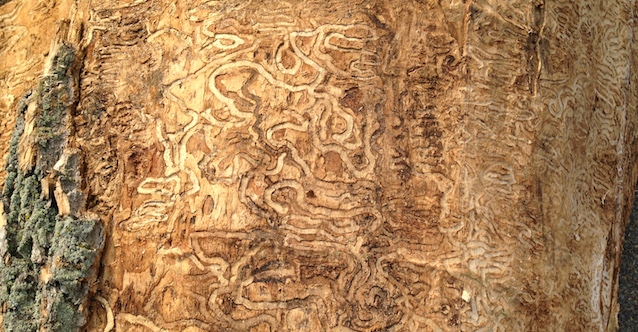Want an indication of how significant and widespread the damage caused by the emerald ash borer is? Look at how many North American municipalities have pages dedicated to the destructive beetle on their websites.
Towns large and small, from Colorado to Massachusetts and into Canada, have set up sites. And for good reason. Ash is one of the most prevalent tree species in North America, and millions of ash trees are on public property.
The emerald ash borer obviously is a major problem for private landowners, too. But the situation is magnified for municipalities because of the large amount of land under their control where ash trees are common, such as right-of-ways and parks.
Many municipalities are responding by developing multiyear plans and spending millions of dollars to remove infested and even healthy ash trees, treating trees or a combination of those approaches.
And they are turning to tree care contractors for help.
A borough in Montreal contracted out 600 stump removals. Omaha, Nebraska, is hiring a contractor to help treat up to 11,000 ash trees on public property. Two Minnesota towns not only contracted with a tree service to treat ash trees, they also promoted the company to homeowners.
Related: Learn more about Vermeer stump grinders
“There is a lot of work just from the sheer number of trees,” says Matt Hutchinson, product manager for Tree Care, Rental and Landscape at Vermeer. “Also, a lot of ash trees are mature, which results in larger debris from a removal and requires higher-capacity equipment, and more municipalities are contracting that work out to tree care companies.”
Widespread threat
The emerald ash borer, which is a beetle native to Asia, has been detected in much of the eastern half of North America and has already killed tens of millions of ash trees.
Its spread is predicted to continue. All 48 states in the contiguous U.S. either have the invasive species or are a suitable habitat for it, according to the U.S. Department of Agriculture. Experts consider it a risk to all 7 billion ash trees in North America.
The U.S. federal government says that ash is the most commonly planted tree in new residential and commercial developments, and that it makes up 20 to 40 percent of the landscape ecosystem in some areas of the Midwest.
It is said to be more destructive than Dutch elm disease. The irony is that many ash trees were planted 30 to 50 years ago to replace elms.
Cities seek help
There’s no doubt many municipalities are handling much or even all of the tree care work related to the pest by themselves. In some cases, they’re expanding their staffs — which is something contractors should be aware of given how hard it can be to find good workers in the tree care industry. Chicago, for example, hired 26 laborers as part of a multiyear attack on the emerald ash borer.
But many other cities are seeking help from tree care companies, like Omaha and Montreal. Another example is Fort Wayne, Indiana, which between 2008 and 2010 used city crews to remove 1,191 ash trees and hired contractors to take down another 809 trees.
Good opportunities also exist with small towns.
“They probably have very small public works departments in terms of personnel and equipment,” Hutchinson says, “and need some outside help.”
Not all good news
Contractors should be careful to view the emerald ash borer as a gold mine. There are billions of trees at risk, and a tree that is removed is a tree that can no longer be pruned or treated. Many municipalities have developed replanting programs, but those trees will take years to mature.
This blog post, with input from the Tree Care Industry Association, discusses ways to prepare for lost business due to the emerald ash borer. Contractors should start planning now, review their business models and consider expanding their services.
At the same time, now is a good time for contractors to see if municipalities in their areas could use their services.
“The emerald ash borer is progressing throughout the continent,” Hutchinson says. “I’m not sure we fully understand the impact of it.”
